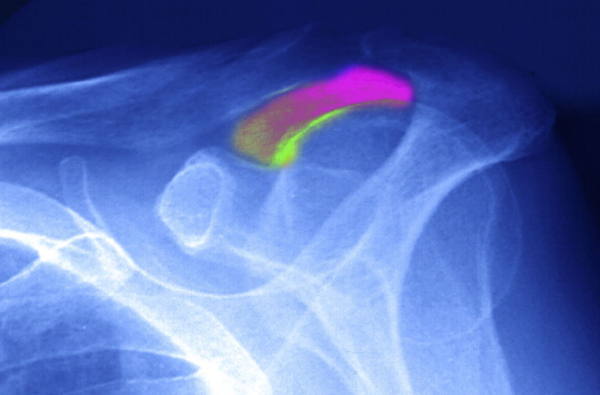Got Tendinitis? Here’s What You Need to Know
Photo: Matthew Stockman/Getty Images
Tendons are crucial to movement. They connect your muscles to your bones and work with joints and cartilage to move bones, which aren’t exactly flexible. The human body is a wonder, but even the healthiest person can fall victim to tendinitis. Like a machine, the skeletal system is prone to snags with overuse—minus the relief of a quick fix like WD-40. Enter tendinitis, the plague of athletes and artists alike.
What is Tendinitis?
Tendinitis refers to the inflammation of—you guessed it—tendons and is generally caused by repeated joint motion. If you use your hands for a living, there’s a chance it’s going to hurt your wrists. Excessive use of your hands—writing, typing, drawing, sports or playing an instrument are common culprits—or legs can irritate your tendons. Sharp pain in your elbow (lateral epicondylitis, more commonly known as tennis elbow), for example, is caused by inflammation in the extensor tendon. Technology can also be a factor: newer branches of tendinitis, like computer elbow and gamer’s thumb, have emerged, and I’d be lying if I said my iPhone had nothing to do with the pain in my forearms. Tendinitis can also occur in the legs, especially the knees, shins and ankles. (You know the Achilles heel? That’s a tendon.)
 Photo By BSIP/UIG Via Getty Images
Photo By BSIP/UIG Via Getty Images
How to treat tendinitis
First of all, you need to go easy on your tendons. The best way to combat tendinitis is to alter the way you use your extremities. Pinpoint the culprit and cut down where you can.
-

-

-

-

-

-

-

-

-

-

-

-

-

-

-

-

-

-

-

-

-

-

-

-

-

-

-

-

-

-

-

-

-

-

-

-

-

-

-

-

 Photo by Helen H. Richardson/The Denver Post via Getty Images
Photo by Helen H. Richardson/The Denver Post via Getty Images






































